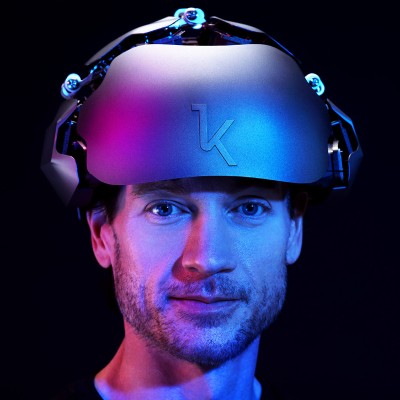
Technologies
Most methods for recording brain signals without the need for surgery either measure the electromagnetic fields generated by groups of neurons or detect small changes in blood oxygenation, which correlate well to nearby neural activity. After years of rigorous analysis, Kernel has developed systems to detect each: Kernel Flux, which uses magnetometers to measure tiny changes in magnetic fields; and Kernel Flow, which pulses light through the skull and into the bloodstream in order to measure how much oxygen the blood is carrying at any given time.
Kernel Flux uses alkali vapor sensors to directly detect the magnetic fields generated by collective neural activity in the brain. These sensors are able to detect the extremely small changes in magnetic fields resulting from a brain’s intrinsic electrical activity, across the whole head, and in natural environments.
Why OP-MEG? In contrast to electrical signals, the magnetic signature of neural activity directly exits through the skull and scalp without distortion. However, because MEG sensors respond to magnetic fields regardless of their origin, it is critical to distinguish those arising inside the brain from those caused by motion through background magnetic field gradients or other ambient sources such as power lines or nearby electronics like phones or computers.
A full-head-coverage Kernel Flux system provides 720 channels of magnetometer data and operates without a multilayer, magnetically-shielded room. The large number of channels and active magnetic shielding allows for high-performance noise rejection even in environments with natural user head motion or noisy peripherals.
Kernel Flux combines the leading edge of several technologies: microfabricated alkali vapor cells, semiconductor lasers, compact optics, high dynamic range real-time control systems, and low-noise electronics. Each Kernel Flux OP-MEG system was designed from the ground up to work as an integrated system optimized around the user’s experience for extended periods of time—allowing researchers to capture brain recordings while users watch movies while reclining, during conversation, or while interacting with technology or their nearby environment.

Flow is the first commercially scalable time-domain near-infrared spectroscopy (TD-fNIRS) system in history.


News